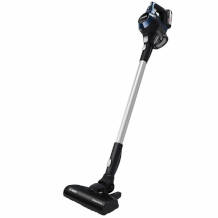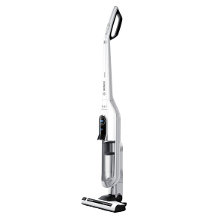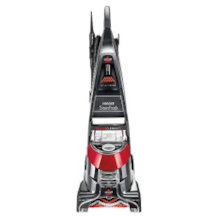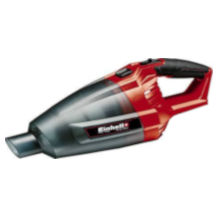Vacuum cleaner purchasing advice: how to choose the right product
- What You Need to Know
- People with allergies to dust and dander need an effective vacuum cleaner with high suction power to get rid of particles and hair that can cause an allergic reaction.
- Cylinder vacuum cleaners usually consist of a wheel-mounted body and an extendable power cord, making them good for houses with lots of space.
- However, those with tightly-furnished, smaller houses are advised to opt for something compact and maneuverable, like a handheld vacuum cleaner.
- Vacuum cleaners come with bags or without, with each having its advantages and disadvantages. This should be decided upon according to your own personal needs.
- Vacuums with a water filter are a good option for allergy sufferers.
- Manufacturers offer different nozzles and brushes to help aid the thorough, gentle and simple cleaning of different surfaces.
What Do I Need a Vacuum Cleaner For?
Almost every household in Britain owns a vacuum cleaner. In the year 2014 alone, more than 119 million vacuums were sold around the world. In the following article, we’ll explore the different uses of a vacuum cleaner and find out who specifically stands to benefit from having which type of vacuum.
Dangerous Dust
As the name suggests, the job of a vacuum cleaner is to literally use a “vacuum” to suck up dust particles. Household dust can be found in every household and is one of the biggest causes of allergies. Household dust is a catch-all term for a mixture of different organic and inorganic substances. These include: flakes of human or animal skin and hair, fluff, soot, pollutants, plant particles, as well as dust mites and their excrement. It is this that can become dangerous and lead to allergic reactions, like running eyes or asthma attacks.
Help Against Allergies
A powerful vacuum cleaner, capable of getting rid of dust particles without stirring them up, is especially important for allergy sufferers. Some manufacturers offer models which are especially good at doing this. Most of them have particularly powerful suction, stopping any dust particles from escaping. Special nozzles for crevices and soft furnishings ensure that every corner can be reached comfortably. It is important that the filter bags are resealable, ensuring that sucked-up dust doesn’t escape when changing the bag. Vacuum bags with an antibacterial coating are notably good for those with allergies. Allergy sufferers should avoid dust traps like curtains and carpets and instead focus on surfaces and materials that are easy to clean.
Getting Rid of Animal Hair Effectively
Just as with sufferers from household dust, sufferers from animal allergies are also recommended to opt for a good vacuum, capable of reliably removing pet hair and dander. In the UK alone it is estimated that there are over 50 million pets, the majority of which are dogs and cats. Some manufacturers offer special vacuums for pet hair which make use of high-power suction brushes which can remove animal hair and dander from carpets and soft furnishings. Some vacuums even operate especially quietly so as not to expose pets to unnecessary fear and stress.
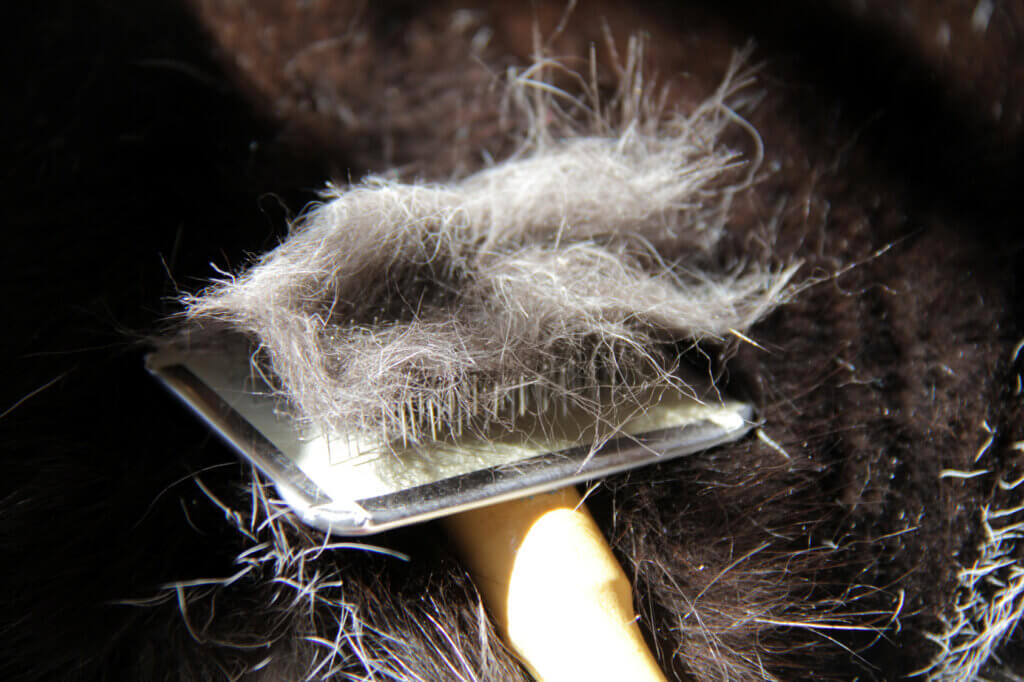
What Are the Different Types of Vacuum Cleaner?
In principle, all vacuums work in pretty much the same way. A fan creates low atmospheric pressure, which in turn creates an airflow that sucks up dust and dirt through an opening. Inside the vacuum, the sucked-up air passes through a filter, where it is cleaned. This air then passes through the motor, where it serves as a cooling agent, before coming out clean through the exhaust grille.
Despite often working in similar or even identical ways, there are some differences between vacuum cleaners. The most common and popular models of vacuum are listed below, together with their plus points and drawbacks.
Cylinder Vacuum Cleaner
The most classic of all vacuum designs is the “cylinder”. It remains to this day the most common model on the market. It is made out of a casing, in which a motor, a fan and a filter are housed. The casing is mounted on wheels, allowing the user to comfortably pull the vacuum over the floor without having to carry it or pick it up. It is connected to the suction pipe and nozzle with a tube. A great advantage of the cylinder vacuum cleaner is that it is suitable for a number of different surfaces– be it carpet, wood or tile. Most models also come with extra nozzles for cleaning soft furnishings, furniture and curtains. Cylinder vacuums come either with or without vacuum bags. Both options have their advantages and disadvantages. Bagless vacuums are often cumbersome to maintain but are also more environmentally friendly. Vacuum bags, meanwhile, are easily disposable, but they are expensive and create rubbish.
Most models come with a long power cord, allowing the user to comfortably vacuum larger rooms without having to unplug at the mains or use an extension cable. In tight, cluttered houses, there is a risk that the casing can become caught on furniture. In such cases, space-saving models with a flexible stick or that can be used by hand may be more appropriate.
Advantages
- Effectively cleaning
- Easily used
- Main weight on the ground
- Suitable for all surfaces
- Available with or without vacuum bags
- Long power cord extension radius
Disadvantages
- Awkward usage in tightly-furnished rooms
Upright Vacuum Cleaners
Upright vacuum cleaners are a lesser-seen alternative to cylinder ones. Unlike with the classic cylinder model, the casing of an upright vacuum is attached directly to the suction pipe and nozzle. The user pushes an upright vacuum cleaner in an upright, back-friendly posture. Upright vacuums are especially practically designed, allowing them to be positioned anywhere in a room while not taking up as much space as a traditional cylinder model. Those with lots of stairs in their house may be better served by a cylinder vacuum which can be pulled along behind. This task is comparatively awkward with an upright vacuum. Most of the upright vacuums on the market are bagless.
Advantages
- Back friendly
- Simple usage
- Space saving
- Easy to store
Disadvantages
- Difficult vacuuming of stairs
- Comparatively small selection on the market
Vacuum Robots
Vacuum robots are the newest innovation in comfort, freeing you from tiresome chores and helping to save time. With some models you can even programme set times for the robot to get to work. Vacuum robots don’t use bags, meaning that you have to be careful to remember to regularly clear them. The following table sums up the plus points and drawbacks of using a cleaning robot.
Advantages
- Saves time and hard work
- No vacuum bags
- Programmable working time
- Usually quieter than other vacuums
Disadvantages
- Some corners inaccessible
- Battery life only two hours
- Not suitable for every carpet
- Comparatively expensive
Battery and Handheld Vacuum Cleaners
So-called “battery” and “handheld” vacuums are particularly compact in size. They can either be bought as small battery vacuums or handheld vacuums with a hose. While small battery-powered vacuums are effective for getting rid of small messes, like breadcrumbs or dirt in the car, handheld vacuums with a hose can also be used for vacuuming the entire house.
Small battery-powered vacuums either come with a dust box and filter, or simply with a dust collector. These vacuums are not suitable for larger jobs given their limited volume and low battery capacity. They usually need to be charged after about ten minutes of use. They are, however, extremely easy to use and don’t need to be connected to the mains. This helps to avoid getting in a tangle with cables.
Handheld vacuums with a hose are much more compact and effective for cleaning tight, cluttered spaces than cylinder vacuums. They are easy to manoeuvre between furniture thanks to their light weight and mobility. Depending on your preference, handheld vacuums are available with battery or mains power connection.
Advantages
- Extremely lightweight
- No cable tangles
- Corners accessible
- Space saving
Disadvantages
- Limited battery life
- Small dust collector
- Limited suction power
Stick Vacuum Cleaner
Stick vacuums are a special type of handheld vacuum which is extremely compact and visually resembles a staff or rod. They are an easy alternative to the sometimes awkward to manoeuvre cylinder vacuums and are particularly well suited to hard floors made from wood or tile. The light weight and compact construction make them particularly mobile, while aiding in the cleaning of difficult-to-reach or raised surfaces. Given their small size and lightness, the dust collector is correspondingly small and needs to be emptied regularly. Ergonomic stick vacuums can be bought with a power cable or battery.
Advantages
- Lightweight and compact
- Available with power cable or battery
- Back-friendly posture
Disadvantages
- Dust collector needs to be frequently emptied
- Not as effective for carpeted floors
Wet/Dry Vacuum Cleaner
Wet/dry vacuums are capable not only of cleaning dust and dirt, but also of removing liquids. These vacuums can be used to replace a bucket and mop. Mostly, these vacuums come with a run-of-the-mill vacuum bag, together with a special unit for collecting wastewater. The user can then switch between functions with the press of a button. This is a great method for clearing up spills and accidents. Using the wet function after a soak in shampoo is also a good way to clean soft furnishings. Thanks to the wastewater collection unit, wet/dry vacuums are also a great tool for cleaning balconies, terrasses, or, depending on their size, being used for industrial purposes.
Commonly, wet/dry vacuums come with a dust collector with a volume of 20 and 30 litres, while special models for industrial use can hold 40 litres or even more. These models are comparatively large, awkward to use, and heavy. Those with allergies stand to profit from the use of a wet/dry vacuum. This is because wet/dry vacuums trap dirt particles in water, helping to clean the air and improve the climate of a room.
Advantages
- Thorough, deep cleaning of soft furnishings
- Perfect for liquid spills
- Large wastewater capacity
- Improved interior climate
- Well-suited to those with allergies
Disadvantages
- Comparatively large
- Heavy
Vacuum Sweeper
While stick vacuums are better suited to cleaning flat surfaces, vacuum sweepers are particularly well suited to cleaning carpeted floors. Vacuum sweepers comb deep-lying dirt out of the carpet using a brush roller and suction nozzle. They reliably remove animal hair from carpeted floors. This is of particular use to animal owners and allergy sufferers. Should allergy sufferers still prefer to have a carpet over a hard floor, regular cleaning is particularly important. In order to clean different types of carpet, most of the brushes are adjustable to the height of the carpet in question. To clean wooden or tiled floors, the brush roller can simply be turned off.
Most vacuum sweepers are bagless and come with a telescopic shaft which can be height adjusted. Many vacuum sweepers are just upright vacuums. They are free standing and can be placed wherever to save space. They are also easy on the back.
Advantages
- Adjustable brushes
- Perfect for carpets
- Even work on hard floors
- Ideal for animal owners and allergy sufferers
Disadvantages
- Awkward on stairs
What’s Inside a Vacuum and How Does it Work?
Vacuum cleaners differ sometimes massively in their component parts and functionality. Two types of vacuum are commonly found in households: the classic cylinder vacuum and the compact, handheld or battery-powered vacuum. In this section, we’ll take a closer look at both of these types.
Cylinder Vacuum – Bagged or Bagless?
Most common vacuums can be divided into two sections:
- The motor
- The dirt collector
The dirt collector can be further narrowed down to models with, or without a bag. These two groups differ from one another in the way they work.
Bagged Vacuum Cleaners
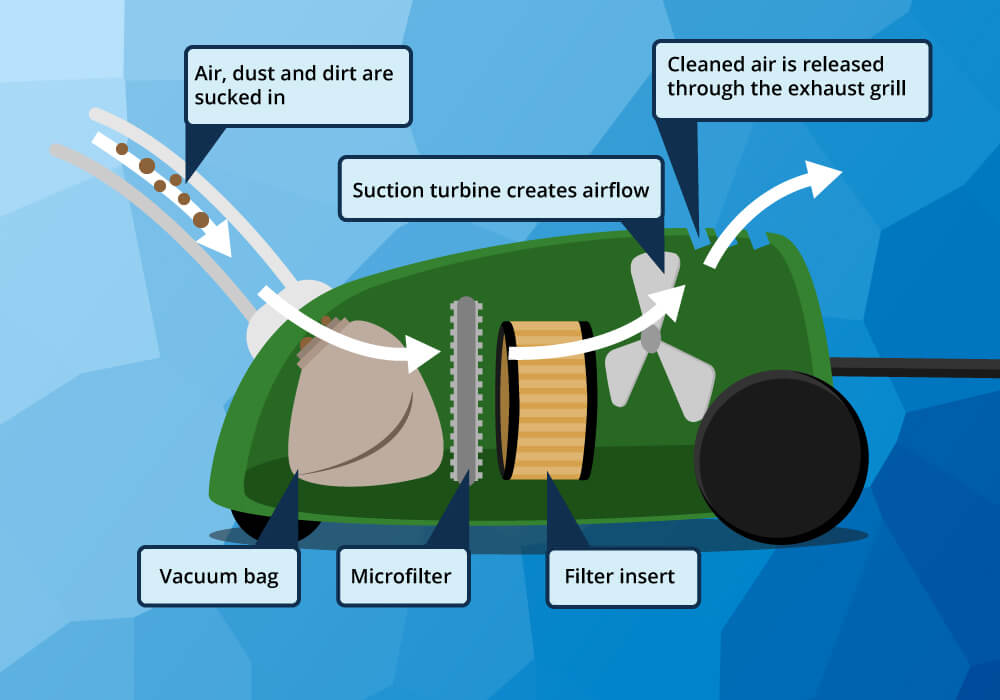
Cylinder vacuums traditionally come with a bag, while bagless models can be considered a modern alternative. The bag works as a filter, directly catching the airflow from the vacuum and trapping dust and dirt. Next, the partially filtered air passes through another filter. Modern vacuum bags are now so well developed that they can trap even the smallest of dust particles.
When the bag is full it needs to be removed, cleared and replaced by a new bag. This means that the owners of a bagged vacuum need to regularly buy replacement bags. As a payoff, these models are often cheaper than their bagless counterparts. The frequency with which the bags need to be changed is of course dependent on how rigorously the vacuum is put into use. It is important to change the bag once it is full, otherwise the normal suction power of the vacuum noticeably drops off. Moreover, bacteria and mold can grow in a full bag, which can lead to unpleasant smells. Lots of bagged vacuums come with a display which flashes red when it is time to change the bag. Changing the bag is usually very easy. That said, users should be aware to not leave a full bag lying around, as sucked-up dust can easily spill out of the bag opening.
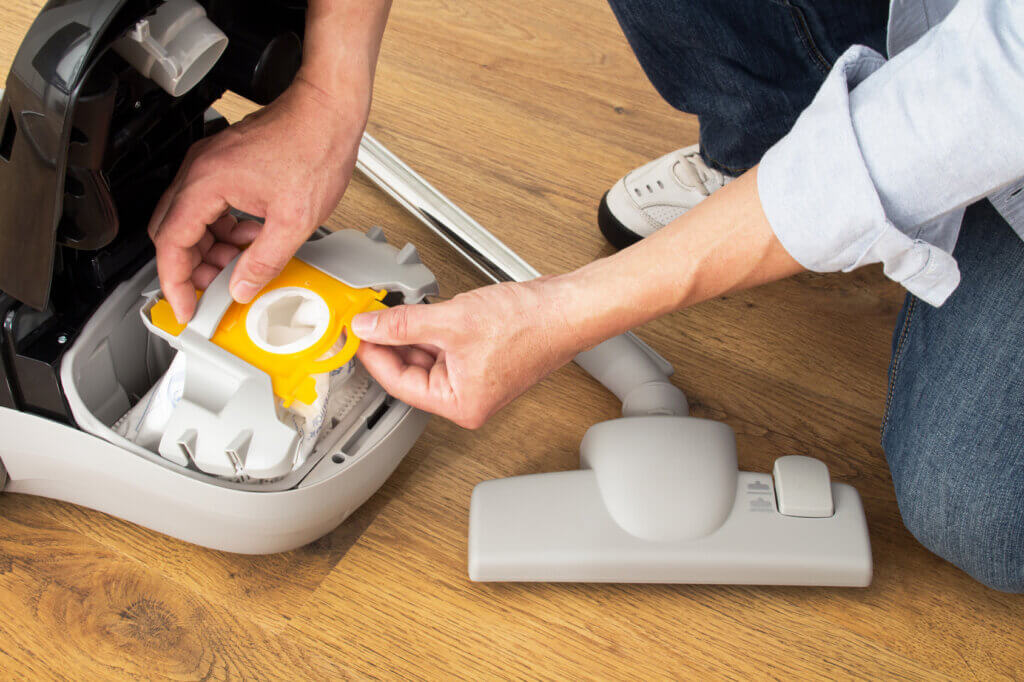
Advantages
- Strong suction power
- Comparatively cheap
- Easy cleaning
- Usually very quiet
- Low-maintenance
Disadvantages
- Stocking up on bags necessary
- Running costs
- Not very environmentally friendly
- Heavy
- Bag can give off an unpleasant smell
Bagless Vacuum Cleaner
The modern alternative to bagged vacuum cleaners is the bagless vacuum, or “cyclone vacuum”, so named due to the technology it uses. Air and dirt is sucked into the vacuum, where it begins to rotate. Centrifugal force then separates the dust and dirt particles from the air and collects them in the dust collector.
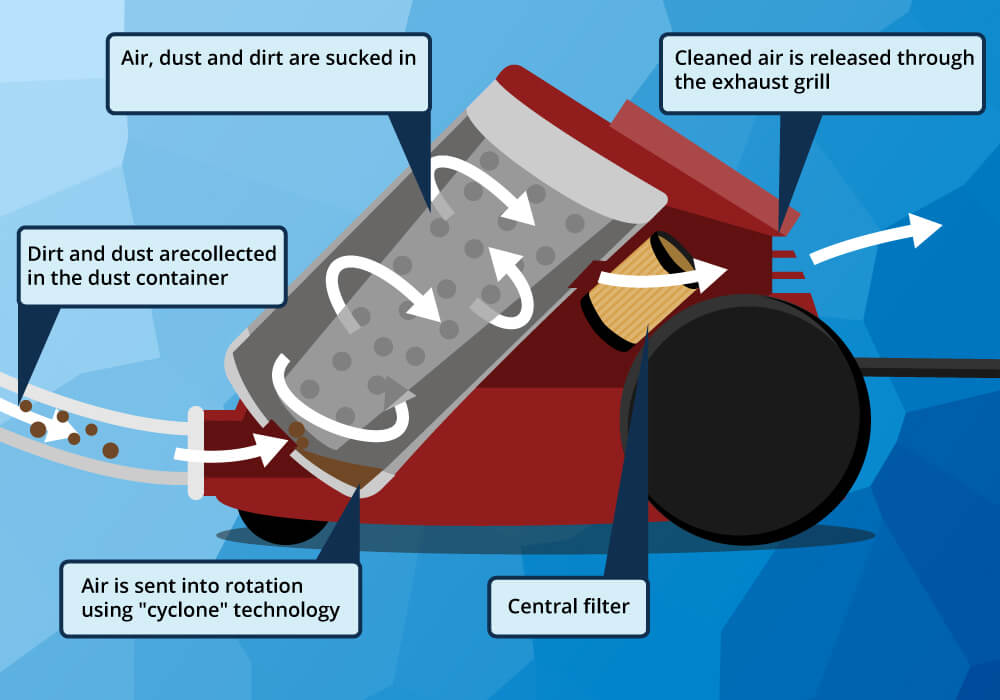
Cyclone vacuums can be separated into two different categories:
Single-Cyclone Vacuum stir up dust, blowing it into a cone-shaped container. This system works particularly well for larger dust particles. Fine particles are then trapped by a central filter made of paper. This paper filter can quickly become dirty and needs to be regularly changed so as not to negatively affect the suction power of the vacuum.
Multi–Cyclone Vacuums, just like with a single-cyclone model, firstly clean larger dust particles which are forced under centrifugal force into the dust collector. In a second cleaning phase, the air is pressed through several smaller cyclones, causing the air to circulate at high speed. Particularly small dust and dirt particles can be filtered out of the air this way.
While single-cyclone models are capable of cleaning air for larger particles, multi-cyclone vacuums are capable of doing this even for the finest of dust particles. The more cyclones the air passes through, the cleaner it is when it finally leaves the vacuum. In contrast to single-cyclone models, lots of multi-cyclone vacuums do not require a central filter. This makes the maintenance of the vacuum a lot less tiresome, reducing the need to worry about the loss of suction power.
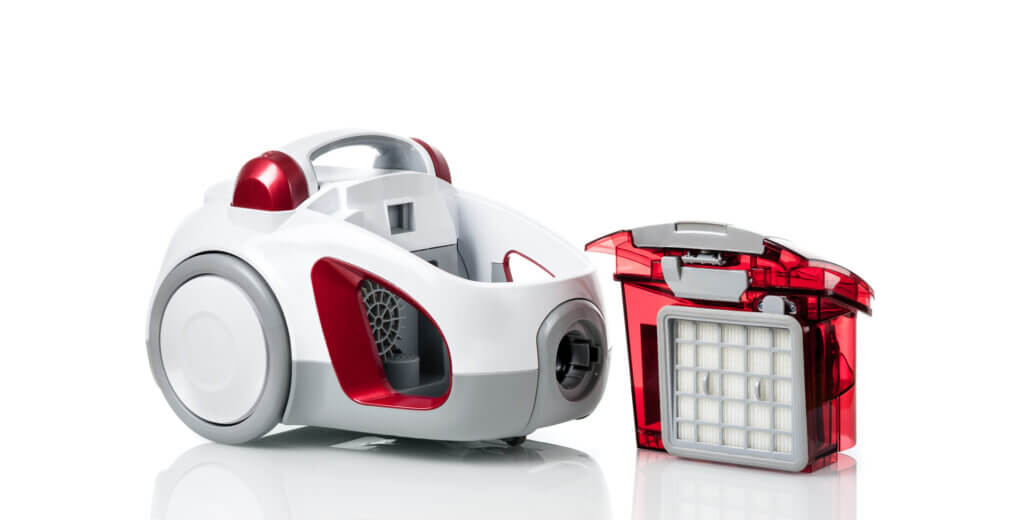
Although bagless vacuums are usually more expensive than bagged ones, the running costs of regularly replacing bags are also reduced. In the long-run, users stand to save money, as well as the difficulty and time of finding and buying replacement bags. Reducing this need for a rubbish bag is also an environmentally friendly choice. On top of this, bagless vacuums mostly don’t give off a smell. The dust collector in many models is transparent, allowing the user to see when it is ready to be emptied. The downside, however, is that cleaning the dust collector and dust filter (if there is one) is a lot more work than changing a normal bag.
Advantages
- Reliable filtering of the air
- No bag necessary
- Environmentally friendly
- Usually very lightweight
- Normally without smell
- Easy to check how full it is
Disadvantages
- Potentially difficult to clean
- Expensive
- Comparatively loud
What Works Best for People with Allergies?
The question as to whether bagged or bagless vacuums are better for allergy sufferers is not easy to answer. Bagless vacuums with multi-cyclone technology are known to clean the air extremely thoroughly and reliably. However, it is very difficult to avoid coming into contact with dust when emptying the dust collector. On the other side of the equation, bagged vacuums come equipped with high-value, reliable filters, meaning that they are also more than capable of filtering out allergens. Individual manufacturers even offer special bags with an antibacterial coating, capable of reducing the growth of mildew, mold, and bacteria. That said, it is still possible to come into contact with allergens when changing the bag. For this reason, a powerful filter system and consistently strong suction power are more important for allergy sufferers than the choice between a bagged or cyclone vacuum.

For allergy sufferers, the hygienic “water filtration vacuum” provides a bagless alternative to a cyclone vacuum. This design takes its inspiration from nature, cleaning the air like rain by using water to trap the smallest of dust particles– pollen included.
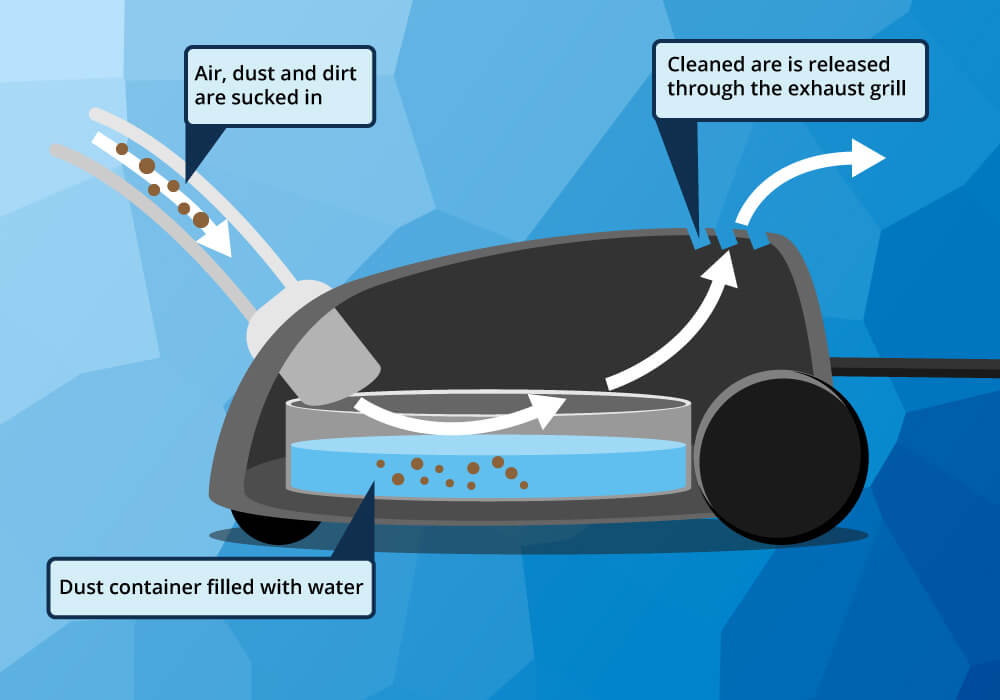
In order to do this, these models are usually equipped with a container which needs to be refilled with fresh tap water before each use. Thanks to the exceptional filtration qualities of water, normally, no extra filter is needed. Although the air undergoes a particularly thorough cleaning, the maintenance and upkeep can be time consuming. The water tank needs to be cleared after every use to avoid any build up of mold.
Vacuum bags: Yes, or No? The Most Important Arguments Compared
Both models have their plus points and drawbacks. Whether a bagged or a bagless model is a better choice is down to the requirements of the individual. The following shows the individual benefits of the two vacuum systems:
Bagged Vacuum
- Often has better suction power
- Cheaper to buy
- Simple to replace the bag
- Gives off less noise when in use
- Less prone to breakage
- Lower maintenance
Bagless Vacuum
- Reliable air filtering
- No annoying and expensive buying of bags
- More environmentally friendly
- Usually lighter
- Normally without a smell
- Easy to check how full it is
Handheld/ Cordless Vacuum Cleaners: The Compact Alternative
Handheld or cordless vacuums can be found in many households as an alternative, or in addition to a classic cylinder vacuum (with or without a bag). These vacuums come in two different types:
- Small compact cordless vacuums, which are usually used to clean up small messes like breadcrumbs or dirt in the car.
- Two-in-one combinations of handheld and cordless models are also known as “stick vacuum cleaners”.
Construction and Operation
Both types of compact vacuum cleaner work in the same way as the classic cylinder vacuum. The cordless vacuum is made up of an elongated casing, containing the motor, the fan, the battery, and the dust collector. A handle is located at the top, while at the other end the casing attaches directly to the suction pipe.
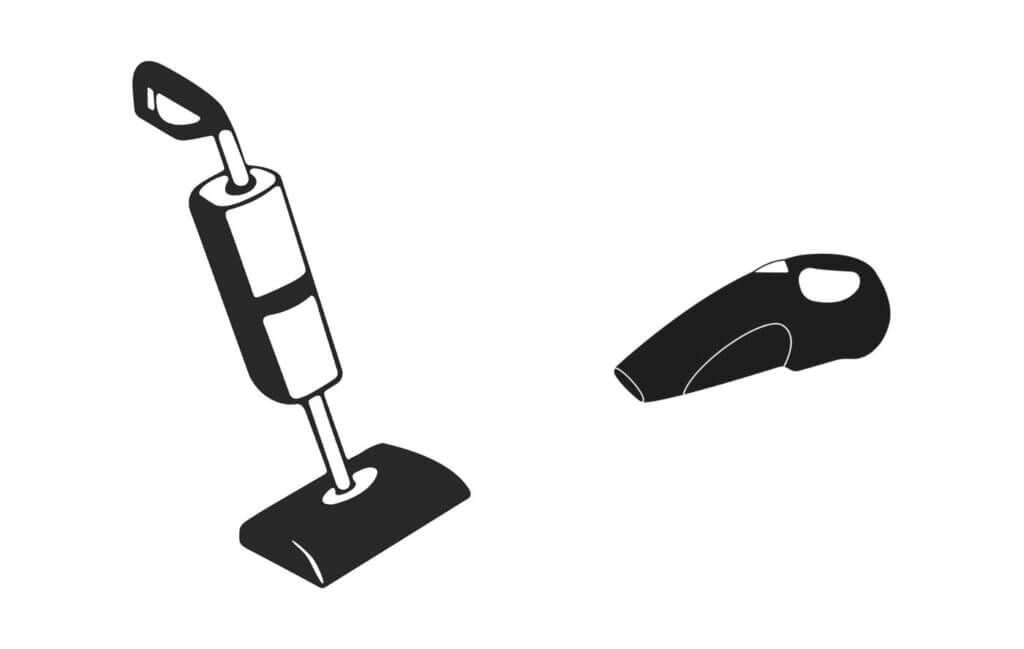
The two-in-one devices are handy, cordless vacuums controlled by a long handle. Nozzles which are identical to those of a normal cylinder vacuum can be attached at one end. So-called “stick vacuums” are a special variety of cylinder vacuums.
Comparing Handheld Devices with a Cylinder Vacuum
The largest advantage of a cordless vacuum over a classic cylinder one is the absence of an annoying power cable. Whether your house is big or small, this removes the need to connect to a power outlet and the need to worry about whether the cable will stretch far enough or get caught on the furniture. This enables users to be far more flexible. Handheld and cordless vacuums are much smaller and lighter than cylinder models, making them good at getting into difficult-to-reach corners or vacuuming in tightly furnished apartments. They also save a lot of space. Certain stick vacuums are even capable of vacuuming liquids.
In comparison to cylinder vacuums, cordless vacuums are not suitable for big jobs. Most models need to be recharged at a power outlet after around 10 minutes of use. The charging time, meanwhile, usually takes around five hours. What’s more, given their weakened suction power, many handheld or cordless models struggle to live up to comparison with cylinder vacuums connected to mains power. Another downside is their small volume, meaning that they need to be cleared regularly. In the following table, we take a look at the most important benefits and drawbacks of owning a handheld or cordless vacuum in comparison to a cylinder one:
Advantages
- Light weight
- Space saving and versatile
- Highly flexible
- Perfect for difficult-to-reach corners
Disadvantages
- Limited battery life
- Small dust collector
- Limited suction power
Generally speaking, cordless vacuums are only truly recommended to be bought in combination with a cylinder vacuum. They are best for small tasks, like vacuuming breadcrumbs, getting rid of cat litter, or cleaning the car. Stick vacuums are unable to keep up with larger models due to their reduced suction power and capacity. However, for users looking to vacuum a small, tightly-furnished apartment, these models are usually completely fine. Due to the reduced suction power of cordless vacuums, allergy sufferers are recommended to stick with a traditional cylinder model.
The Energy Label and the Performance
Since September 2014, a new EU ruling has been in place regarding the sale of vacuum cleaners. This put a limit on electricity usage of vacuum cleaners on the market—reducing the nominal power consumption of a vacuum cleaner to 1600 watts. From the year 2017, this limit was reduced to 900 watts in order to further save energy.
The new ruling is not, however, applicable to all types of vacuum cleaner. As well as devices that have already been purchased, the following articles do not fall under jurisdiction of the ruling:
- Cordless vacuum cleaners
- Vacuum robots
- Wet vacuums
- Wet/dry combination vacuums
- Industrial vacuums
- Built-in vacuums
- Floor-polishing machines
- Vacuums for outside use
However, following a complaint from the vacuum manufacturer Dyson, manufacturers are no longer required to attach the energy label to their products. This was due to irregularities in the testing conditions between different manufacturers. The EU is currently working on a new set of guidelines that will eventually replace the current energy label for the EU market. The new label is likely to be very similar to the old one. Although brand new models may temporarily come without an energy label, manufacturers should still supply information regarding all of the categories mentioned here (05.2021).
Does Less Power Consumption Mean Less Suction Power?
The new EU ruling regarding energy efficiency of vacuum cleaners had created the worry that, although vacuum cleaners would use less energy in the future, they would also be less effective. But those who had worried about a limp-suction future can breathe easy—the power consumption in watts may sink in order to save electricity, but this has nothing to do with the cleaning performance or suction power of the device. In fact, quite the opposite is true, with the EU ruling attempting to increase the lifespan and performance of vacuum cleaners, as well as their energy saving capabilities.
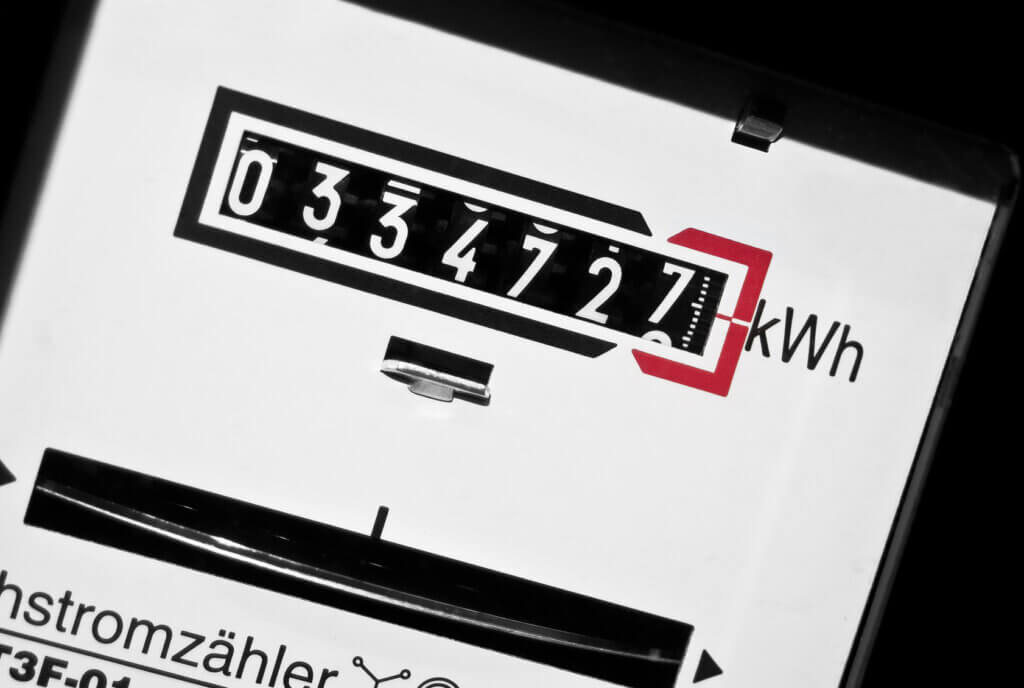
The wattage of a device, which is given on the label, refers to the motor and simply represents the amount of electricity which a vacuum takes from the mains. A higher wattage means a higher electricity consumption. The wattage does not play an important role for suction power and cleaning performance of a vacuum. These are more reliant on the motor technology, the suction pipe and the nozzle construction of the device.
An Overview of the Energy Label
The new energy label has two main purposes. The first is to comply with the new EU ruling. The second is to make the comparison of different models easier by comparing the technical data, like energy efficiency class and operating volume, in a simple graphic. The following graphic gives a clear overview of the energy label and its constituent parts. We’ll go on to explain these in further depth.
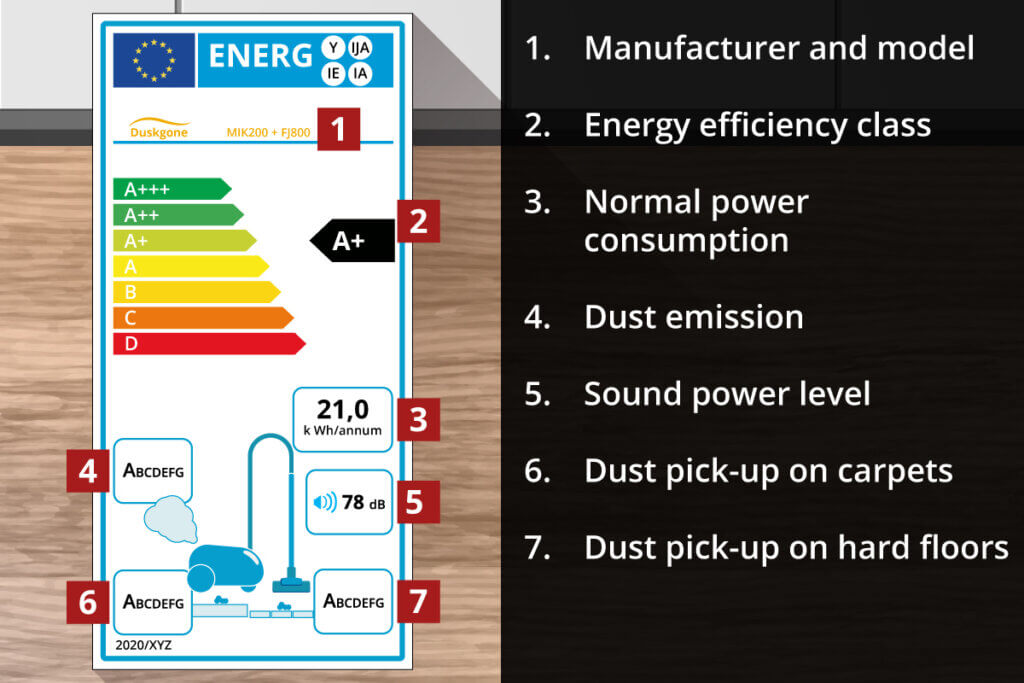
Nominal Power Consumption and Yearly Energy Consumption
Depending on their energy efficiency, different models of vacuum are separated into seven classes from A to G, with A being “very efficient” and G being “very inefficient”. To be categorised in one of the higher classes, the power consumption must be low. The difference between one class to the next is six kilowatt hours. This means that a model given the energy class A uses 36 kilowatt hours of energy less than a vacuum from class G when used for the same amount of time.
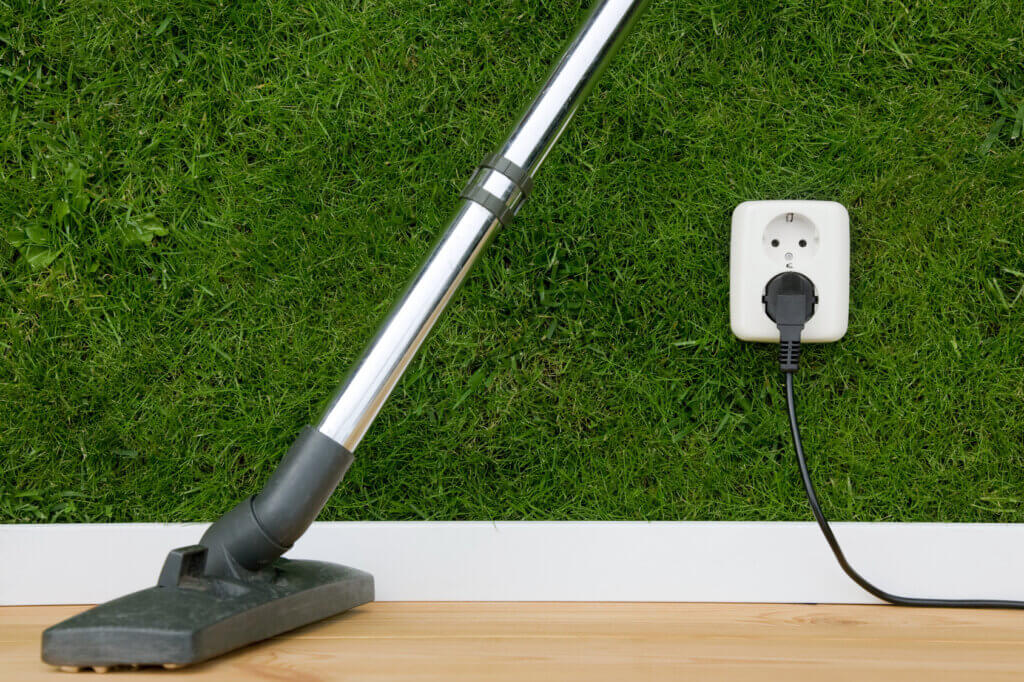
Next to the nominal power consumption class can be found the average yearly energy consumption of the vacuum in kilowatt hours per year. This measurement is based on having vacuumed 50 times in a year (around once a week) on an average floor surface of 87m². Of course, the energy consumption changes depending on the area vacuumed and the number of times you clean a week. The EU ruling of 2014 limited the yearly electricity consumption to 62 kilowatt hours. From 2017, only vacuum cleaners that used less than 43 kilowatt hours a year were allowed to be sold.
Dust Emission Class
Manufacturers need to attach the dust emission value at the bottom of the energy label. It judges the cleanliness of the air that the vacuum releases. This information is particularly important for those who are allergic to household dust. Similarly to the nominal power consumption classes, there is a seven-step scale from A to G. Vacuums from emission class A are the best at controlling the release of dust, while those in class G are the worst. How many (or how few) dust particles escape from the vacuum is largely dependent on the quality of the filter.
The so-called “emission value” is the important measurement for deciding the class of a vacuum cleaner. Vacuums in class A cannot have a re-emission value of more than 0.02%. That means that vacuums in this category emit exactly 0.02% of the sucked-up dust back into the air. If a vacuum in dust emission class A sucks up 100,000 dust particles, only 20 of them will find their way back into the room. The following table shows the dust re-emission values for the seven different classes.
| Dust Emission Class | Emission Value |
| A | Re-emission value ≤ 0.02 % |
| B | 0.02 % < Re-emission value ≤ 0.08 % |
| C | 0.08 % < Re-emission value ≤ 0.20 % |
| D | 0.20 % < Re-emission value ≤ 0.35 % |
| E | 0.35 % < Re-emission value ≤ 0.60 % |
| F | 0.60 % < Re-emission value ≤ 1.00 % |
| G | Re-emission value > 1.00 % |
Since September 2017, an EU Ruling has meant that only vacuum cleaners with a dust re-emission rate under one percent are allowed to be sold. From that point onwards, vacuums in dust re-emission class G were no longer permitted.
Dust Pick-Up on Carpet and Hard Floors
Information about the “dust pick-up” of different models can be found at the bottom of the energy label. Here you can find details about the performance on carpet and hard floors. Each category is separated into seven classes, with A representing a “very good”, and G a “very weak” cleaning performance.
The “dust pick-up on carpet” class is given as a percentage and represents how much dust each vacuum can suck up on an empty bag (or dust collector) on a standard test carpet. The classification of a vacuum is dependent on the so-called “dust absorption value”. To be awarded a category A rating, this percentage must be 91% or higher. This means that a category A vacuum has to absorb at least 91% of dust from a carpet. Vacuums that absorb less than 71% of dust are given a G rating. As of 2014, the EU ruling states that the minimum absorption value should be 70%. This was raised in 2017 to 75%.
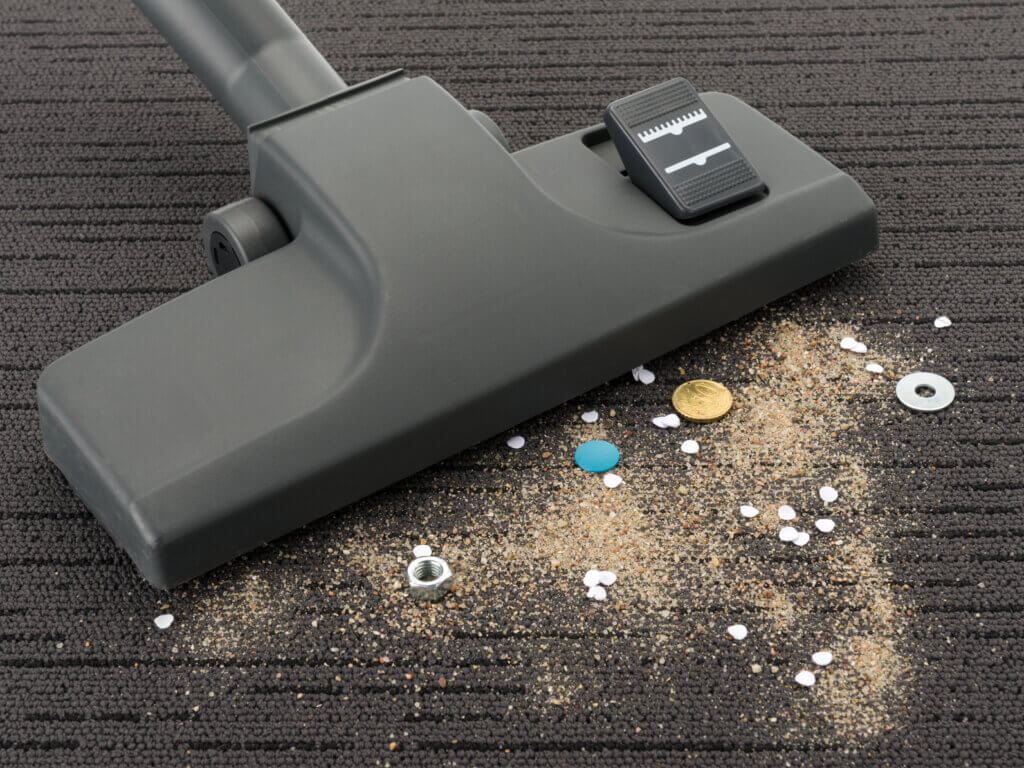
The “dust pick-up on hard floor” classification shows how effectively vacuums work on hard surfaces, such as laminate, parquet, tiles, or floorboards. Just as with the carpets, the dust pick-up on hard floor classification is based on the dust absorption rate. This is tested on a test surface with diagonal joints on an empty bag (or dust collector) while the vacuum is turned up to maximum. Since hard floors are generally easier to clean than carpets, different rules apply to the rating system. In 2014, the ruling required that at last 95% of dust was absorbed. In 2017, this was raised by the EU ruling to 98%.
Sound Power Level
Together with nominal power consumption, dust emission and dust pick-up performance, the sound power level is another important factor when choosing a new vacuum. This value is given in dB (decibels). The value displayed on the energy label is recorded in close proximity to a vacuum being used on a standard carpet. The higher the value in decibels, the louder the vacuum. Those looking to vacuum stress free should look for a vacuum with as low a decibel value as possible. In conjunction with the EU ruling, the maximum volume should not exceed 80 decibels. This volume is equitable to the noise of street traffic. You can find quieter models on the market with an operating volume of 70 decibels or less. That’s about the same volume as a car or a normal conversation. Vacuum robots are known for being especially quiet.

You should be aware to not use your vacuum at times that could affect your neighbours. Late in the evening, early in the morning, or on Sundays and holidays are all times which are considered impolite to use loud equipment.
The Right Filter
Next to a vacuum’s energy consumption, dust emission class, and motor power, the type and quality of the filter is one of the most important purchase criteria. After all, the quality of the filter is the determining factor in the cleanliness of reemitted air.
Different Filters and Their Functions
As well as the vacuum bag which catches larger dirt and dust particles, bagged vacuum cleaners also make use of a filter, which is used to clean the sucked-up air of fine dust particles and allergens.
In combination with the vacuum bag, most bagged vacuums have two further filters: The motor filter sits between the vacuum bag and the motor and serves to protect the motor and fan should the bag break from larger bits of dirt, hard particles, and sharp objects. Usually this comes in the form of a coarse filter which needs to be replaced yearly.
Exhaust filters come in two forms: micro or HEPA. These are located behind the filter and help to clean the air of fine dust particles and harmful substances before it leaves the vacuum. To keep the filter working optimally, it is recommended that it be changed at least twice a year.
Although bagless models don’t have vacuum bags, this doesn’t necessarily mean that they don’t have a filter system. Bagless vacuums normally come with an exhaust filter which cleans the air for fine particles before it is released. Single cyclone vacuums come fitted with a central filter. Central filters are ribbed and help to clean air from the inside of the vacuum. So as to maintain suction and filter performance, the central filter should be changed regularly. Manufacturers recommend that you do this at least once a year.
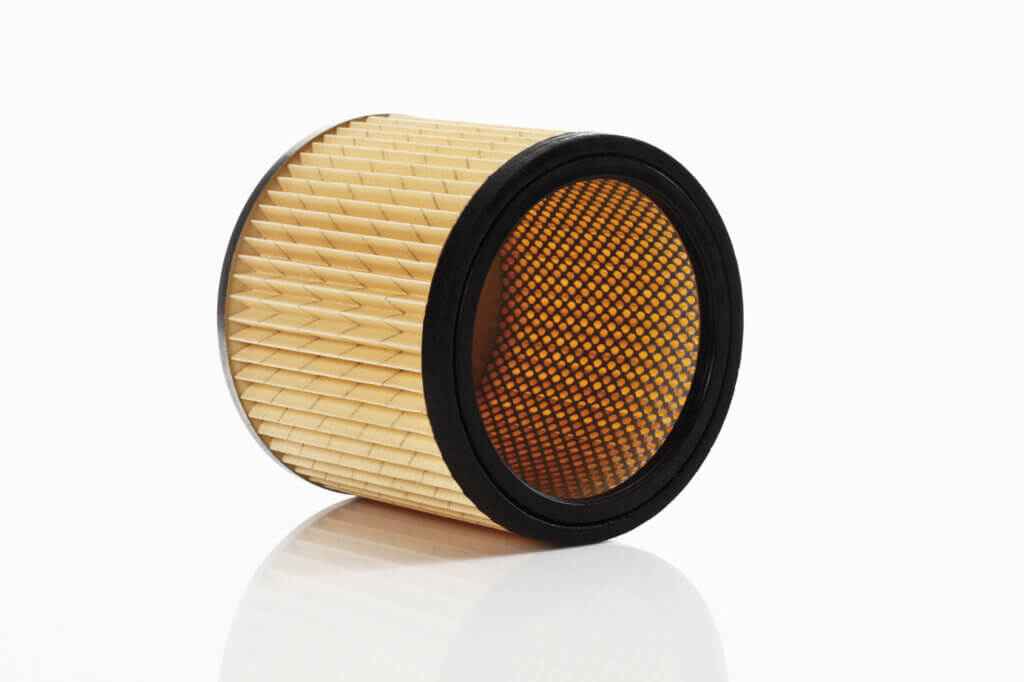
With exhaust filters, the choice needs to be made between a micro and a HEPA filter. Micro filters tend to be a little coarser than HEPA filters. So long as a vacuum is well constructed, micro filters are still very much capable of trapping a good amount of dust. HEPA filters have the reputation of being more effective at trapping the smallest dust, dirt, and micro particles. It is important to be aware of the fact that not all HEPA filters are equal. Instead, they often come in different classifications. In the next section, we’ll analyse the different HEPA filters on the market and explore how these differ from one another.
HEPA Filter Classification
The acronym “HEPA” stands for “high efficiency particulate air”—which basically means that the filter is capable of trapping small particles like fine dust, pollen, or dust mites. Conventional filters work somewhat like a kitchen sink, trapping and filtering out objects of a certain size. HEPA filters, meanwhile, use a special technique to filter even the smallest of particles. Different HEPA filter classifications are set by their filter efficiency. This means that the filters in different classes are capable of filtering different sized dust particles. There are five corresponding HEPA filter classes:
| Filter Class | Filter Efficiency (%) | Filter Efficiency (per 1,000,000 particles) |
| E10 | Higher than 85 % | > 850.000 particles |
| E11 | Higher than 95 % | > 950.000 particles |
| E12 | Higher than 99,5 % | > 995.000 particles |
| H13 | Higher than 99,95 % | > 999.500 particles |
| H14 | Higher than 99,995 % | > 999.995 particles |
In comparison to E10 class HEPA filters, capable of filtering 85% of fine dust particles, filters in the highest class, H14, are capable of collecting 99.995%. They are highly recommended for people who suffer from allergies to household dust and pollen, as they filter practically 100% of allergens from the air and help to improve the interior climate.
There are, however, filters which are capable of filtering even smaller dust particles than a H14 HEPA filter. These are known as either “Ultra HEPA filters”, or “ULPA filters” (“ultra low penetration air flow”). Vacuums with ULPA filters are most commonly used in places with particularly strong hygiene requirements, such as operating rooms, research laboratories, and quarantine facilities.
Practical Vacuum Accessories
Lots of manufacturers offer practical accessories to go with their vacuums. Sometimes these are included upon purchase. Examples of these would be special nozzles, brushes and bags. In the following section, we’ll look at which accessories are particularly important and which can help make vacuuming easier.
Different Vacuum Nozzles
Different nozzles help to make vacuums universally applicable on varied floor surfaces and in different circumstances. The three nozzles examined in the next section are the most commonly found and are often included with the purchase of a classic cylinder vacuum cleaner.
The Universal Nozzle
The universal nozzle is useful for hard floors, as well as carpets. It makes use of spiral-shaped bristles which are extended when needed with the use of a kick pedal. This allows users to retract the brushes, making it easier to vacuum on carpets. When vacuuming hard floors like tiles, floorboards, or laminate, the brushes can be extended again so that the floor doesn’t get scratched by the nozzle.
The Upholstery Nozzle
As the name suggests, the upholstery nozzle can be used to clean sofas, couches, or mattresses in a thorough, yet fabric-friendly way. Typically, only 15 cm wide, they are usually narrower than universal nozzles and are therefore suitable for vacuuming arm rests, neck supports, or any other upholstered surfaces which are difficult to clean with a larger nozzle. They are useful for getting deep into cracks and crevices. Most upholstery nozzles have rounded edges, allowing users to vacuum sensitive upholstery and materials without damaging them. Many upholstery nozzles are equipped with spiral-shaped bristles or a dust lifting cushion.
The Crevice Nozzle
Just like the universal and upholstery nozzles, the crevice nozzle should come included with any good vacuum cleaner. The crevice nozzle is characterised by its long, narrow form, which flattens out towards the end. The width of the nozzle at its tip is normally no more than a centimetre. This makes getting into corners much easier than it is with larger nozzles, helping to thoroughly clean crevices and ridges. Most crevice nozzles are made from hardened plastic and are therefore not ideal for use on damageable surfaces.
Other Special Nozzles
Together with the three standard nozzles named above, an even larger array of nozzles is available for practically any situation. The so-called “soft brush nozzle” is a good example of this. These nozzles provide a comfortable and efficient alternative to using a feather duster and are perfect for cleaning shelves, furniture, and other surfaces. Some manufacturers offer extra-gentle nozzles for cleaning parquet or laminate floors. These are usually fitted with felt padding, which helps to not damage surfaces when cleaning.
Turbo and Electric Brushes
Some manufacturers offer powerful turbo or electric brushes which are suitable for cleaning deep stains in carpets. Turbo brushes (also known as turbine brushes) are best suited to cleaning carpets, car seats, and upholstery. In these models, airflow powers a rotating brush roller which helps to grip onto the threads of the carpet. So-called “electric brushes” also contain a rotating brush roller. However, as the name suggests, in this case this is powered by an electric motor. Electric brushes are commonly used in cleaning public spaces or hotel rooms, but are also suitable for use by animal owners who want to thoroughly remove animal hair and dust mites. Those looking to buy an electric brush should be aware that the brushes can be height adjusted, allowing for use on carpets of different thread length.
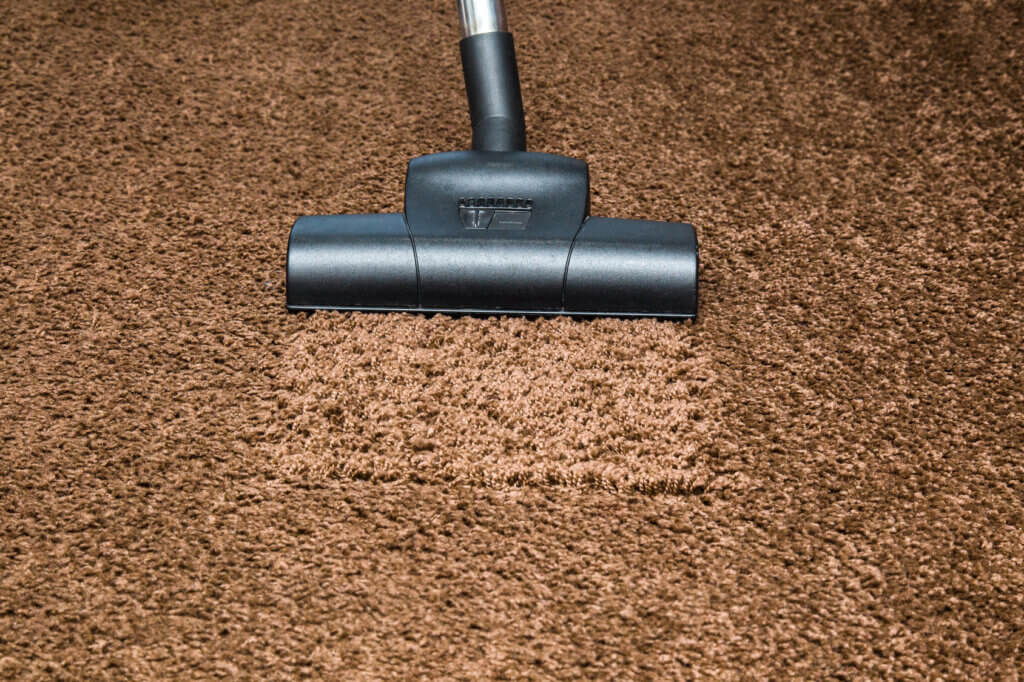
Getting the Right Vacuum Bag
When buying a bagged vacuum cleaner, it’s essential to get the correct vacuum bags to go with it. Even if extra bags come included with the original purchase, the day will come where vacuum bags, which correspond to the particular model of vacuum, will have to be purchased.
An Enormous Selection
There are around 1120 different types of vacuum bag for about 42000 different models of vacuum cleaner.
On the market, you can often find so-called “universal bags” that promise to be compatible with a multitude of models of vacuum cleaner. In reality, these bags often don’t live up to their billing and can result in reduced suction quality. If suction quality is what you want, this is achieved best with a vacuum bag which corresponds exactly to the model of vacuum in question. However due to the enormous selection of vacuum bags, finding the correct bag is often easier said than done. DIN, the German Institute for Standardisation, has frequently called for a standardisation of vacuum bags to help make this selection process easier for buyers. This suggestion has unfortunately been out-rightly rejected by manufacturers. Buyers who find choosing the correct vacuum bag too tiresome should instead stick with a bagless vacuum cleaner.
Vacuum Bags Made from Paper or Fleece?
Vacuum bags differ in material, just as they do in shape and size. Classic vacuum bags are made from up to four layers of paper, helping to contain dust, once it has entered the bag. Vacuum bags made from paper have the edge on ones made from fleece in that they are usually cheaper to buy. Paper is also a recyclable material, making it better for the environment.
Vacuum bags made from fleece are more stable and rip-proof than their paper alternatives, while also performing better at filtering fine particles. Vacuums with a fleece bag also lose less suction power than those with a paper bag. Both options have their advantages and drawbacks. The decision for which one you opt is up to your individual needs and preferences. In the following, we’ll take a little look at the benefits of each material.
Paper Vacuum Bags
- Less Expensive
- Recyclable Material
Fleece Vacuum Bags
- More stable and rip-proof
- Better at filtering fine particles
- Less loss of suction on a full bag
Vacuuming Tips
Even though the vacuum does most of the hard work for you, there are still a few things to be aware of when trying to get a deep, comfortable clean. In the next section, we’ll look at some tips for getting the most out of your vacuum.
Regularly Clean Your Vacuum
Vacuum cleaners can only work to their fullest capacity when they are regularly cleaned. Take note of the following steps:
- The floor nozzle should be cleaned with your hand or a cloth to remove hair or fuzz.
- Soak, wash, and then dry the vacuum pipe and tubes.
- Wash the central and any further filters with warm water before leaving them to dry.
- Replace or clean the exhaust and motor filters at least once a year.
- Change the vacuum bag or clear the dust collector.
- Wash down the body of the vacuum with a damp cloth and a little cleaning product.
The most common reasons for a loss of suction power are a full vacuum bag, a dirty brush, or a blockage in the pipe, the tubes, or the filter. The best way to avoid a loss of suction power is,therefore, to regularly clean and maintain your vacuum.
Removing Animal Hair
Animal owners usually find themselves in a constant battle with animal hair in their houses. Having hard floors can help to make this easier. Animal hair is much harder to remove from carpets and upholstery. Special turbo and electric brushes come with at least one rotating brush roller capable of combing through carpets to remove embedded animal hair. An alternative to special nozzles is a brush vacuum. These normally come with an electric nozzle. Upholstery is best dealt with by narrow mini-turbo nozzles or special upholstery nozzles for animal hair. Some manufacturers even offer special animal hair removal nozzles, which use special strips to effectively remove cat and dog hair from carpets and hard floors.
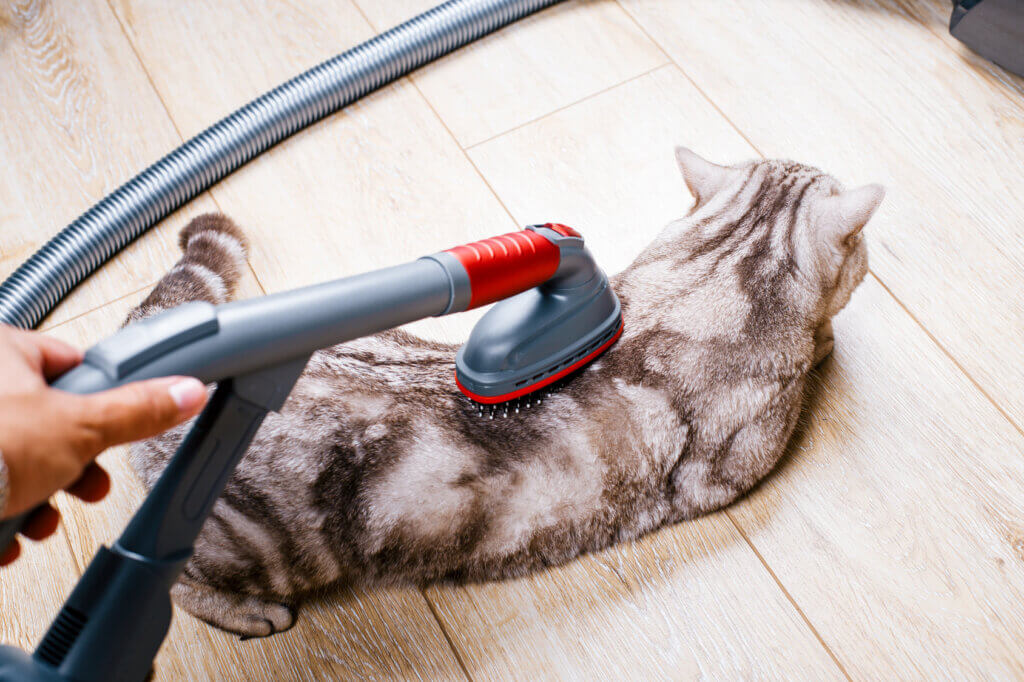

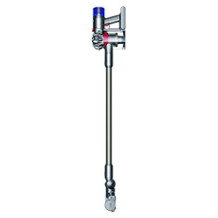
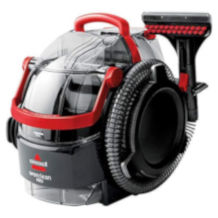
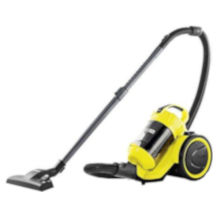
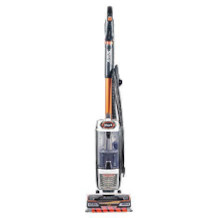
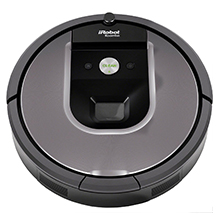
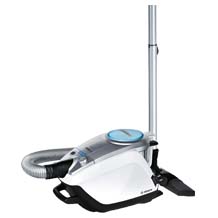
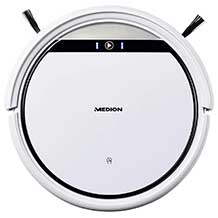
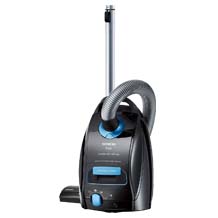

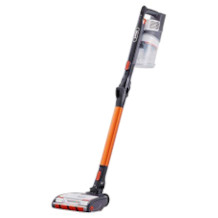
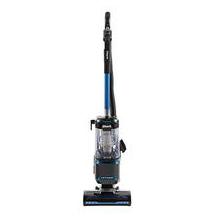

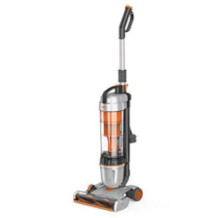


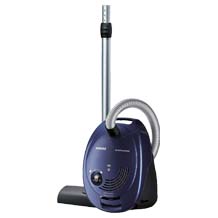

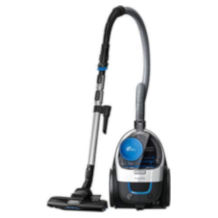



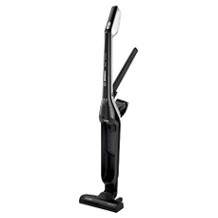
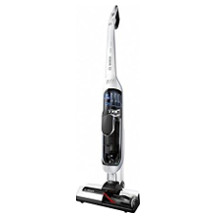
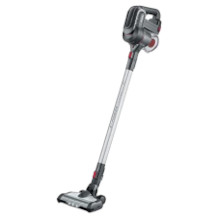
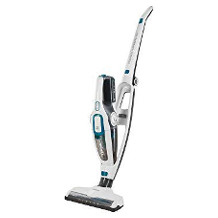

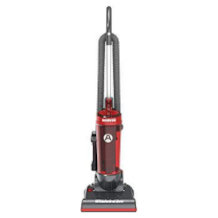


 4,814 reviews
4,814 reviews
